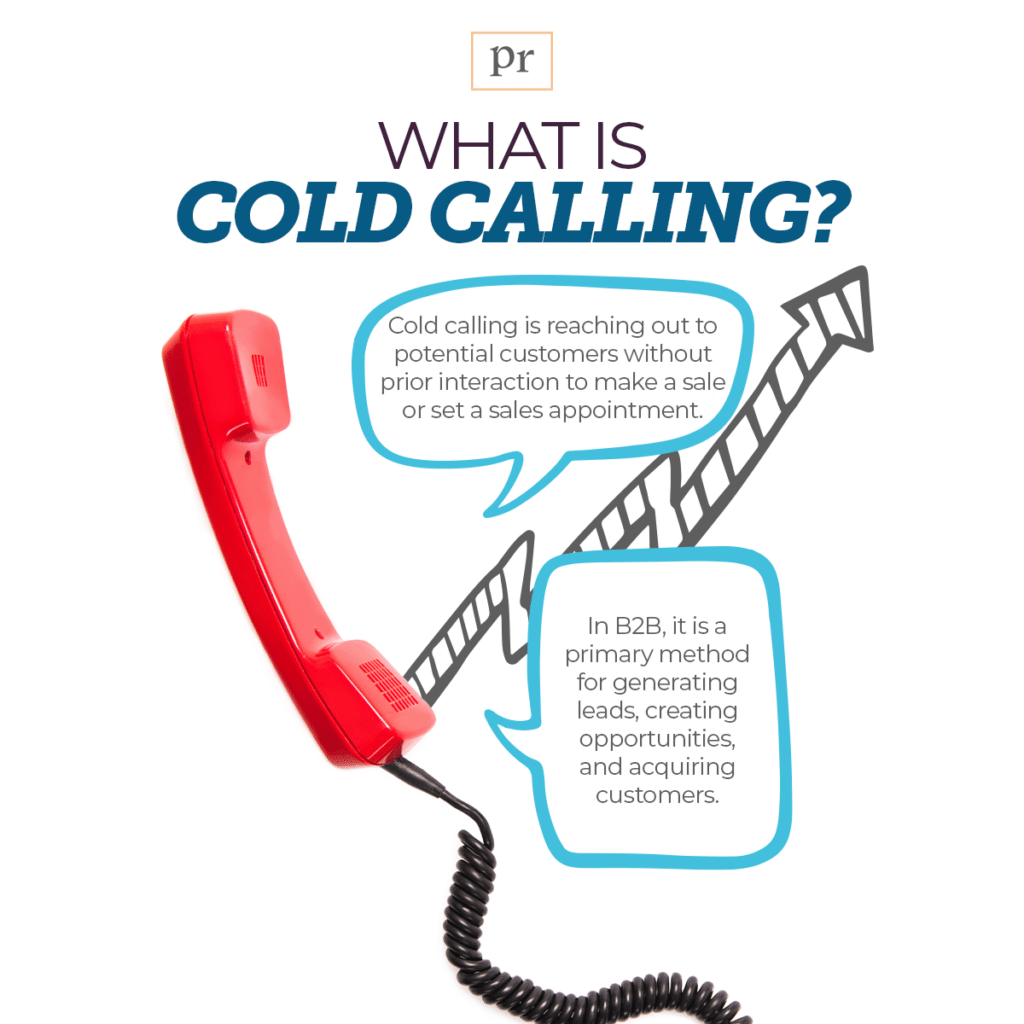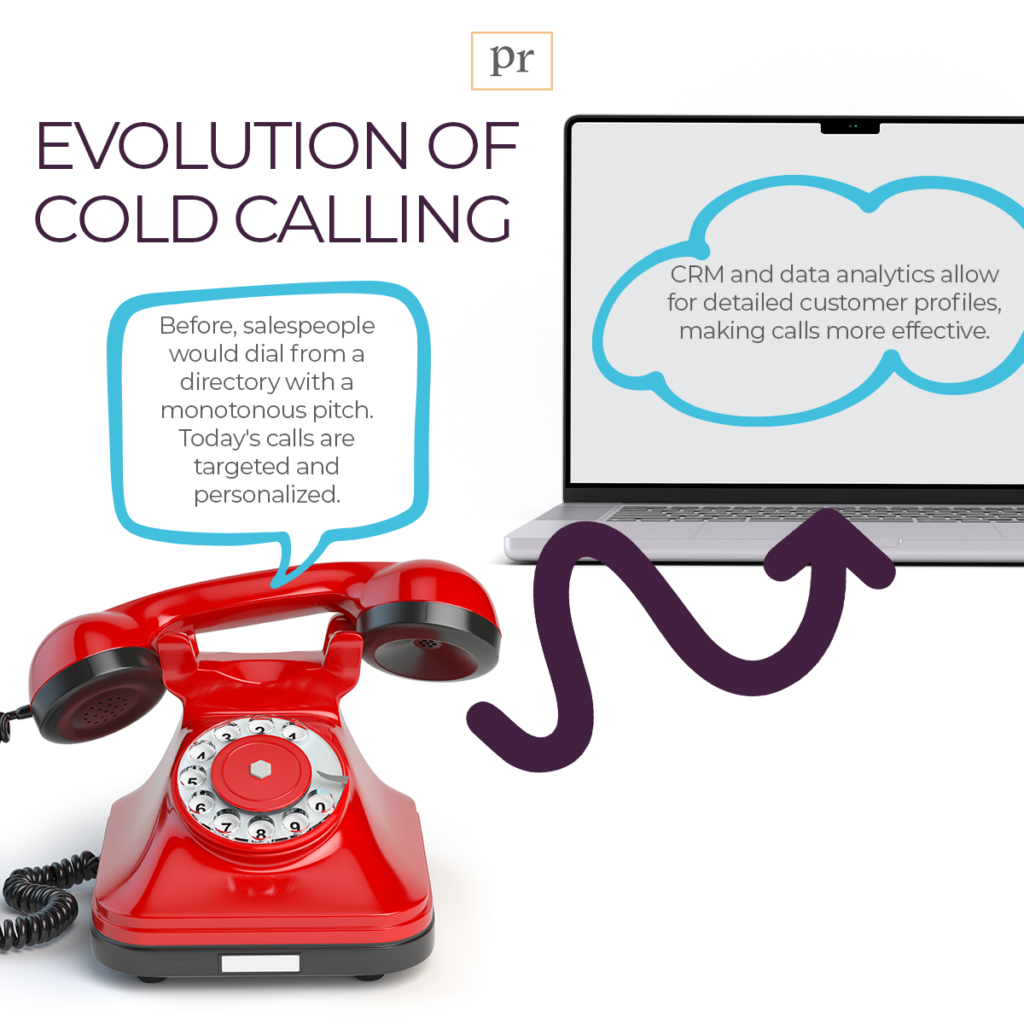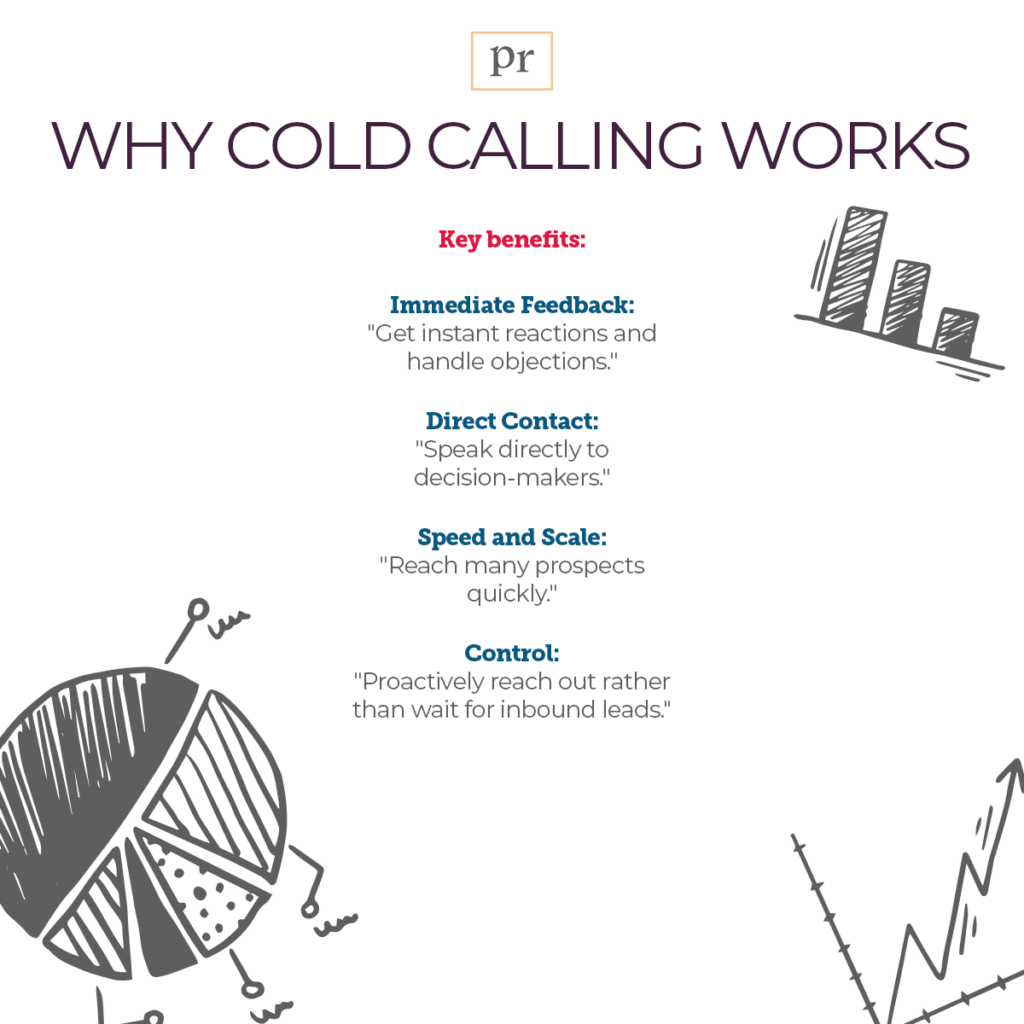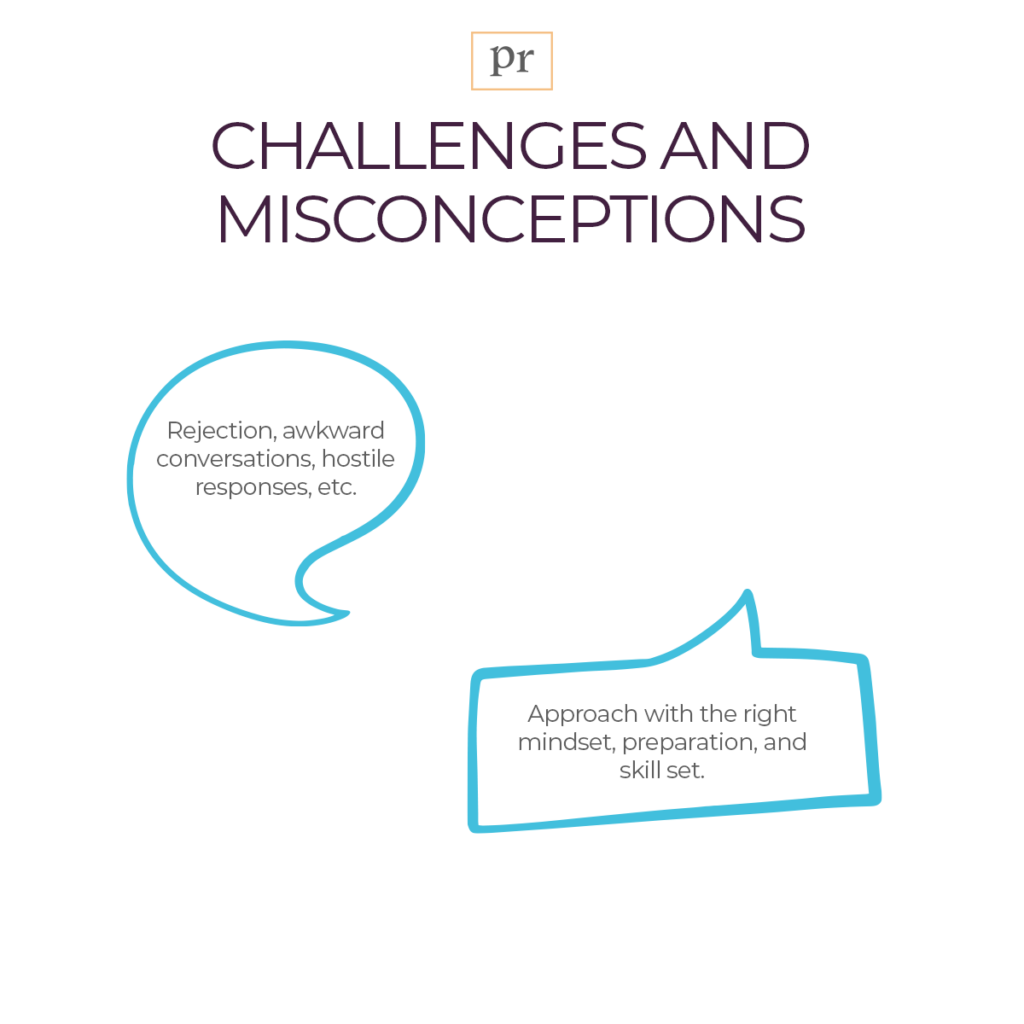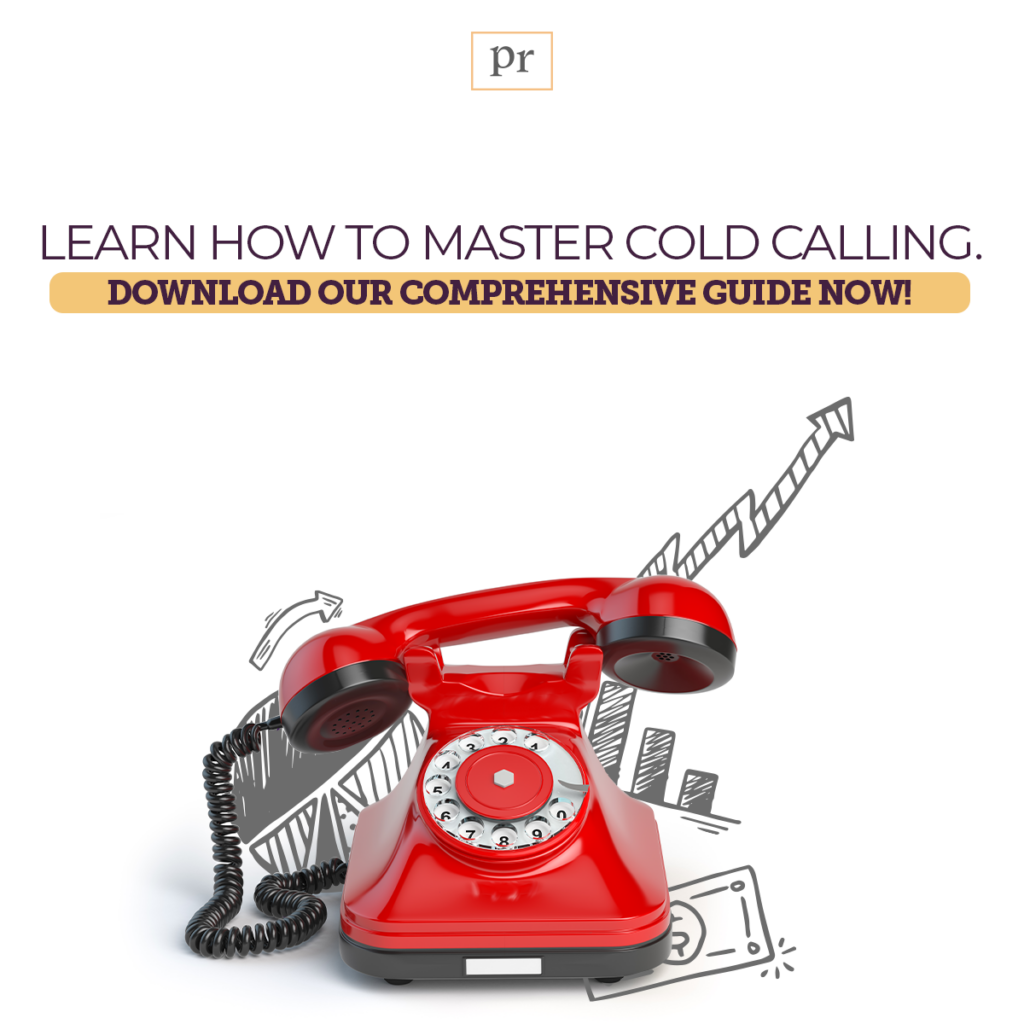Welcome to your comprehensive guide on mastering the often-daunting task of cold calling. Designed specifically for sales professionals, this eBook aims to provide a robust framework, actionable tips, and sample scripts to elevate your cold calling game. Whether you’re just starting out in sales or a seasoned veteran, you’ll find this guide invaluable.
Why Cold Calling is Important
In the digital marketing and automation era, you might wonder, “Is cold calling still relevant?” The answer is a resounding yes. Cold calling remains among the most effective and direct methods for B2B lead generation and sales conversions. It’s a proactive approach that allows you to reach out to potential clients, understand their needs, and provide tailored solutions. Moreover, it offers a human touch—a connection that digital methods often lack. Cold calling can pave the way for long-lasting business relationships and recurring revenue streams when done correctly.
A Primer on Cold Calling Mindset
Before we delve into writing a cold call script, handling objections, or scoring your calls, let’s talk about the mindset. Your mindset can often be the make-or-break factor in your cold-calling success.
Embrace Rejection: You will hear ‘no’ more often than you’d like. The key is not to take it personally. Each ‘no’ is a step closer to a ‘yes.’
Be Curious: Your role is not just to sell but to understand your client’s needs. Approach each call as a problem-solver, not just a salesperson.
Stay Focused: Cold calling requires concentration and active listening. Stay focused, stick to your script, and be flexible enough to adapt your pitch to your prospective client’s needs.
The Value of Preparation: Knowing your product and prospect can make a difference. Research before you call. It can provide valuable insights to form a rapport and address specific needs.
Follow a Framework: A structured approach can make the process less overwhelming. Our Cold Call Scoring Framework provides a step-by-step guide to evaluate your calls, identify areas for improvement, and ensure a balanced, effective conversation.
What You Will Learn
What is Cold Calling?: A thorough breakdown of what cold calling is and why it’s an essential skill in sales.
How to Write a Cold Call Script: Detailed guidelines and tips on crafting the best cold call script to maximize your success rate.
The Cold Call Scoring Framework: A unique, five-category scoring system to help you evaluate your calls and continually improve.
Common Objections and How to Handle Them: Practical advice and phrasing suggestions for overcoming objections and steering the conversation back to your value proposition.
And Much More: Including FAQs, real-world examples, and a close look at qualification questions, next steps, and mutual plans for follow-up.
So, as you journey through this eBook, remember that cold calling is not just about making the sale; it’s about initiating a conversation, building relationships, and creating lasting value for both parties. Let’s embark on this journey to make your cold-calling efforts effective and exceptional.
Introduction
What is Cold-Calling?
How to Write a Cold Call Script Template
The Cold Call Scoring Framework
Common Objections and How to Handle Them
Conclusion
Bibliography
What is Cold Calling?
The Foundation of Direct Sales
Cold calling is the practice of reaching out to potential customers who have had no prior interaction with you or your company with the intent of making a sale or setting a sales appointment. This direct communication is typically carried out over the phone, although it can also be conducted via email, social media, or in person.
In a business-to-business (B2B) context, cold calling is a primary method for generating leads, creating opportunities, and acquiring customers. It’s a way to introduce your company, its products, or services to new prospects and gauge their interest in your offer.
The Evolution of Cold Calling
Cold calling has been a standard practice in sales for decades, but it has evolved substantially over the years. Gone are the days when salespeople would merely pick up the phone, dial a number from a directory, and recite a monotonous pitch. Today’s cold calls are more sophisticated, targeted, and personalized. With the advent of customer relationship management (CRM) software and data analytics, salespeople can now have detailed customer profiles at their fingertips, allowing for a more customized approach.
Elements of a Successful Cold Call
A successful cold call is not just a monologue where you talk about your products or services; it’s a dialogue aimed at understanding the prospect’s needs and problems. Here are some key elements:
Rapport Building: Creating a human connection with the prospect. It’s about establishing trust and showing genuine interest in helping them.
Needs Discovery: This involves asking insightful questions to understand the prospect’s business, their pain points, and what they hope to achieve.
Value Proposition: After understanding the prospect’s needs, you present your product or service as the solution to their problem, outlining the value you can bring to their business.
Qualification: Asking questions related to Budget, Authority, Need, and Timeline (BANT) to ensure that the prospect is a good fit for your product or service.
Next Steps: If the call goes well, you arrange a follow-up conversation, often a more in-depth discussion or a formal sales presentation.
Objection Handling: Be prepared for objections and have a strategy to address them.
Close: This could be as simple as setting up a follow-up call or as significant as closing a sale.
Why is Cold Calling Effective?
When executed correctly, cold calling can be incredibly effective for several reasons:
Immediate Feedback: You get instant reactions and objections, which you can handle quickly, improving your chances of making a sale.
Direct Contact: You’re talking to decision-makers directly, allowing for a more focused and impactful conversation.
Speed and Scale: It’s a quick way to reach many prospects quickly.
Control: Unlike inbound methods, where you wait for the customer to come to you, cold calling allows you to reach out to potential clients proactively.
Challenges and Misconceptions
Despite its potential effectiveness, cold calling is often viewed negatively. It’s associated with rejection, awkward conversations, and sometimes hostile responses. The key is approaching it with the right mindset, preparation, and skill set to turn these challenges into opportunities.
In the following sections of this eBook, we will dissect how to write an effective cold call script, the best practices for handling objections, and the nuances of the Cold Call Scoring Framework to make your cold calling efforts successful.
By the end of this comprehensive guide, you’ll understand what cold calling is and how to do it effectively to maximize your sales potential. So, let’s move on to crafting that perfect cold call script.
How to Write a Cold Call Script Template
The Importance of a Script
A well-crafted cold call script is your roadmap to success in the sales world. A script is your guide, helping you navigate the conversation toward a productive outcome. Whether you’re a seasoned veteran or a newcomer to sales, a well-thought-out cold call script can make a significant difference in your results.
What Makes a Good Cold Call Script?
The best cold call scripts are not rigid monologues but flexible guides. They provide a structure for the conversation while leaving room for personalization and adaptation based on the prospect’s responses. A good script helps you cover all the essential points, from building rapport to handling objections, without sounding robotic.
Trigger-Based Prospecting vs. Value Proposition Approaches
When it comes to crafting the perfect cold call script, there are multiple approaches you can take. Two of the most effective are the “Permission + Value Proposition” and the “Trigger-Based Prospecting” styles. While both aim to engage your prospect and move the conversation forward, they differ in their initial focus and execution. Understanding these differences is essential for choosing the right approach for your situation.
Initial Focus
Permission + Value Proposition: This approach often starts with a generic opener and aims to get permission to proceed with the call. The focus is generally on the value your product or service can provide to the potential customer.
Trigger-Based Prospecting: In contrast, this approach starts with a specific trigger event that makes the prospect more likely to engage with you. The initial focus is on something relevant to the prospect’s current situation, such as a new job, company news, or industry events.
Conversation Starter
Permission + Value Proposition: You’re asking for permission to take a bit of the prospect’s time, usually by presenting a quick question or an introductory statement. It’s a respectful way to enter someone’s space.
Trigger-Based Prospecting: The conversation is more natural and focused on the prospect from the start. You’re not asking for permission; instead, you’re jumping right into something relevant to them.
Value Proposition
Permission + Value Proposition: The value proposition is more general and often focuses on the everyday needs and pain points in the prospect’s industry or role.
Trigger-Based Prospecting: The value proposition is highly customized and immediately relevant to the prospect’s current situation or recent environmental changes.
Engagement Level
Permission + Value Proposition: This approach may require more effort to engage the prospect initially. However, once you have their permission, you have the green light to discover how your solution can solve their problems.
Trigger-Based Prospecting: Initial engagement levels can be higher because you’re starting with something directly relevant to the prospect. However, you must quickly tie this engagement back to your product or service to maintain interest.
Flexibility
Permission + Value Proposition: This style is more adaptable across various scenarios because it doesn’t rely on a specific event. However, it may require more skill in steering the conversation towards a sale.
Trigger-Based Prospecting: This approach is less flexible because it relies on specific events, but it can be incredibly effective when those conditions are met.
Both approaches have their merits and can be incredibly effective when executed well. Your choice between the two will depend on various factors, such as your product, target audience, and the quality of information you have about your prospects. A blend of the two approaches can often offer the most dynamic and effective way to engage potential clients.
How to Write a Cold Call Script Template: Permission + Value Proposition Style
When diving into the world of cold calls, one of the first things you’ll need is a solid script. Not just any script, but the best cold call script tailored to your needs. The aim is to create a cold call sales script that initiates a conversation rather than a monologue.
The first style we’ll cover is the “Permission + Value Proposition” style, which is ideal for breaking the ice and getting your foot in the door.
Opener
Start by asking if the prospect is available.
"Hi, is [First name] in?"
Quick Question
After introductions, pose a quick question to gauge their interest.
"Hi [First name], this is [Name] at [Company], how are you doing today?"
Permission
Before diving into the pitch, seek permission to continue the conversation.
"I called to see if what we do for [Problem] can benefit your team. Did I catch you with two minutes?"
Value Proposition
Once granted permission, move into your value proposition.
"We help [Buyer Persona] who [Problem] by [Solution]. In fact, [Customer Success Story]."
Qualify for Interest + Fit
Ask 2-3 qualifying questions to assess whether the prospect is a good fit for your solution.
"How are you currently addressing [specific facet of the problem]?"
Ask for the Meeting
Finally, ask for an appointment to discuss in more detail.
"Do you have time this coming [Day] so we can get into more detail and determine if there’s a mutual fit?
Trigger-Based Prospecting Style
Another practical approach to cold calling is “Trigger-Based Prospecting.” In this style, you reach out to prospects based on a specific trigger event. Trigger events indicate a prospect might be more open to your product or service. You can incorporate trigger-based prospecting into your cold call script template.
Identify the Trigger Event
Start by identifying what the trigger event is. Whether the prospect has just started a new job, their company is hiring for a specific job title, they attended an industry event, or there was a relevant news update, make sure you know what it is.
Customize the Opener
Incorporate the trigger event in the opener.
"Hi [First name], this is [Name] at [Company]. Congratulations on your new role at [Company]."
Segue Into the Trigger Event
Transition smoothly into why the trigger event is relevant.
"I noticed that your company is hiring for [Job Title], which often indicates a focus on [Area]."
Present a Tailored Value Proposition
The value proposition should be laser-focused on how your solution can add value in the context of the trigger event.
"We’ve helped companies in similar growth phases streamline their [Process/Problem Area]."
Ask for the Meeting
End by suggesting a meeting and reiterate how it's relevant to the trigger event.
"Would you be open to discussing how we can help your growing team in more detail?"
Both script styles have their merits, and you may find that a combination works best for your needs. Regardless of the style, remember that the best cold call script is the one that gets your prospects talking and keeps them engaged. Therefore, it always leaves room for flexibility and genuine human connection.
Final Thoughts
The perfect cold call script doesn’t exist, but the closest you’ll get to it is one that you continuously test, adjust, and adapt. The importance of this iterative process cannot be overstated. Remember, the ultimate goal is not to read off a script but to have a meaningful, productive dialogue with your prospect.
In the following sections, we will look at specific examples of cold call scripts, methods for effectively handling objections, and how to continually use the Cold Call Scoring Framework to improve your cold calling efforts.
The Cold Call Scoring Framework
Why You Need a Scoring Framework
While experience and intuition are valuable in sales, relying solely on them can be a recipe for inconsistency. A structured approach to evaluating your cold calls offers numerous benefits, including enhanced performance, clarity in identifying areas for improvement, and a more robust understanding of what makes a cold call effective. The Cold Call Scoring Framework serves this purpose.
How It Works
The Cold Call Scoring Framework is a standardized evaluation system designed to assess the effectiveness of your cold calls in real time. It focuses on five crucial categories, each of which contributes to the overall success of the call. Each category is scored on a scale of 0 to 3, providing a quick yet comprehensive snapshot of the call’s quality. Below are the categories and their guiding principles:
Category 1: Rapport
Guidance: The aim is to create a genuine human connection. This should take between 1 and 3 minutes and should be filled with good energy and engagement.
Score 0: No effort was made to establish rapport.
Score 3: A genuine conversation is initiated, and a relationship effort is evident.
Category 2: Needs Established
Guidance: The goal is to discover the client’s situation and needs. This should be achieved through curiosity and open-ended questions. Make sure you understand the priority of needs.
Score 0: No questions are asked, or curiosity is shown.
Score 3: Thorough discovery made and valuable data gleaned.
Category 3: Pitch Quality
Guidance: The call should be relevant, customized, and focused. The articulated value of the offering should be conveyed clearly to the client.
Score 0: The pitch is generic and unfocused.
Score 3: The pitch is customized, interactive, articulate, and accurate.
Category 4: Qualification Questions
Guidance: Ask questions to understand if the prospect meets your qualification criteria. Generally, these criteria include Budget, Authority, Need, and Timeline (BANT).
Score less than 3: No qualification questions asked.
Score 3: Thorough assessment made, and an agreement on qualifications is reached.
Category 5: Next Steps / Mutual Plan
Guidance: The caller and the prospect agree to call or meet at a specific time.
Score 0: No next meeting calendared before hanging up.
Score 3: Next meeting calendared with a mutual action plan, defining multiple phases or subsequent meeting dates.
Using the Framework for Continuous Improvement
After each call, take a few moments to score yourself (or have a colleague do it) in each category. Additionally, identify at least two specific actions that could improve your score. For instance:
Feedback 1: “You could have asked more probing questions to understand the prospect’s needs better.”
Feedback 2: “Your pitch was too generic; it would be more effective if customized to the prospect’s specific challenges.”
Final Thoughts
The Cold Call Scoring Framework is not a one-time tool but an instrument for ongoing improvement. By consistently applying it, you’ll become more aware of your strengths and weaknesses and more adept at cold calling. In the long run, this structured approach will lead to better results and more successful sales campaigns.
In the following sections, we’ll dive deep into common objections you may encounter during cold calls and how to handle them effectively.
How to Handle Common Objections
Understanding the Types of Objections
Before diving into specific objections and how to tackle them, it’s essential to categorize objections into three main types:
Conditioned Responses: These are often knee-jerk reactions that prospects have developed to fend off sales calls.
Business Case Objections: These objections come from a logical standpoint and usually involve the prospect’s specific circumstances or existing business processes.
Incumbent Solution Objections: These objections arise when a prospect already uses a different solution and hesitates to switch or consider alternatives.
Understanding the nature of each objection type is crucial for crafting an adequate response.
Let’s dive into individual objections and explore ways to handle them.
Conditioned Responses
- “I’m not interested.”
Response Strategy: “I understand many successful clients of ours initially felt the same. However, after experiencing the benefits of our product, they’ve seen significant improvements in X and Y.”
- “Send me some information.”
Response Strategy: “Absolutely, I can send that over. However, I often find that when people ask for information, it’s usually because they’re swamped. How about we chat briefly instead when you have some free time?”
- “I’m headed into a meeting.”
Response Strategy: “I get it, meetings are important. Could you suggest a convenient time for us to continue this conversation?”
- “I don’t have time to talk.”
Response Strategy: “I completely understand. My call was unexpected. I’ll make it quick so you can get on with your day.”
Business Case Objections
- “We only do business a certain way.”
Response Strategy: “We’re quite adaptable and have worked successfully with teams with unique business styles, much like companies X and Y, who were similar to you.”
- “We use a special, different approach.”
Response Strategy: “That’s fantastic. A unique approach is always refreshing. Many of our satisfied clients, like companies X and Y, also have unique approaches.”
- “This isn’t a priority for me right now.”
Response Strategy: “Fair enough, I’m not asking for a commitment here and now. But could we spend a few minutes discussing the results we’ve delivered for similar clients? Then you can decide if it’s worth revisiting later.”
Incumbent Solution Objections
- “I’m not the decision-maker.”
Response Strategy: “Understood, but your insight into how our solution could benefit your team is invaluable.”
- “I don’t have the budget / it’s too expensive.”
Response Strategy: “Budgets are often allocated in advance, and I understand my call is out of the blue. But many of our long-term clients didn’t have a budget in place when we first spoke.”
- “We’re already using one of your competitors.”
Response Strategy: “That’s worth considering, of course. But are you open to understanding how our platform could offer additional benefits or efficiencies?”
In Summary
Learning to navigate objections effectively can open the door to meaningful dialogue and successful conversions. This section has provided strategies for overcoming some of the most common objections in cold calling. By being prepared and understanding the nature of these objections, you’ll be better equipped to turn challenges into opportunities.
Conclusion
Congratulations! You’ve successfully navigated through the essentials of cold calling, from understanding its significance in sales to crafting the best cold call script that resonates with your prospects. You’ve also learned about the Cold Call Scoring Framework, a tool designed to continually enhance your cold calling skills and ensure that each call is a step towards success.
Mastering the art of cold calling is no small feat. It requires a robust mindset, a well-crafted script, a strategic approach, and the skills to handle objections effectively. But remember, practice makes perfect. You’ll become proficient at turning cold calls into warm leads and successful sales by consistently applying the principles and strategies discussed in this eBook.
The road to mastering cold calling is a journey. But it’s a journey worth taking. Each call you make is an opportunity to learn, adapt, and improve. With the right tools and mindset, you’re making calls, building relationships, and growing your business one conversation at a time.
Thank you for reading this eBook. We hope it is a valuable resource for becoming a cold calling expert. Here’s to your success in turning those cold calls into hot sales opportunities!
Bibliography
This ebook borrows Ryan Reisert’s Cold Calling framework because that’s what we use internally.
This ebook borrows Outreach’s objection handling guide because that’s what we give our SDRs to provide a strong baseline for training on objections.
This ebook also owes a lot to Cole Fox, Brian Wilson, and the Growth Factors team at Bregal Sagemount for their call-scoring methodology. Ours is a modified version of their call scoring framework that we simplified for cold calls. I am sure theirs has improved dramatically since then.
